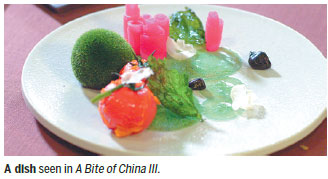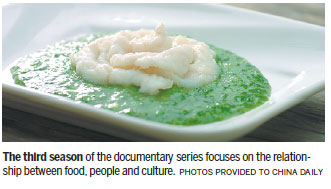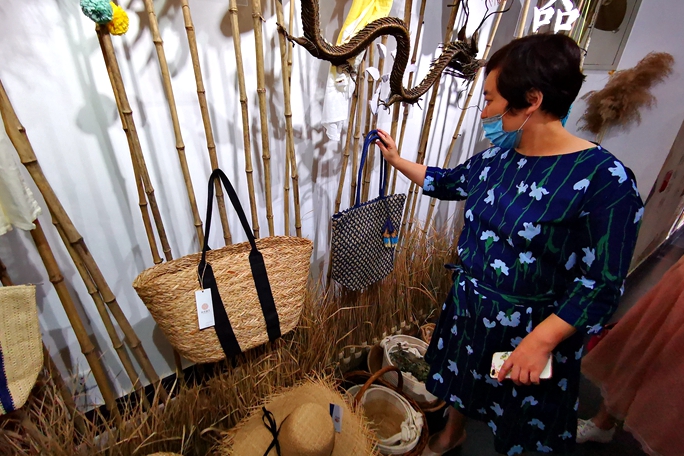A bite-sized piece of culinary culture
How do you make 10 dishes in a courtyard for a dozen tables of guests at a wedding dinner and serve it on time?
Xue Huiming aims to solve this problem by building a long cooking bench with seven ovens in a row that can fry, steam, stew, or boil seven dishes at the same time.
The story is in the first episode of A Bite of China III, the third season of the popular food documentary series produced by China Central Television, which started airing over the Spring Festival on Feb 19.
Following the successful previous seasons in 2012 and 2014, A Bite of China III focuses on the relationship between food, people and culture, according to the new chief director Liu Hongyan.
"Food is the carrier of people's stories, and the stories attached to cultural inheritance. We want to discover how Chinese people have changed their eating habits," says Liu.
With eight episodes each lasting 50 minutes, this season focuses on topics like cooking tools, banquets, snacks, seasoning and fusion foods. Each episode is named after a Chinese character.
The first episode is named Qi (tool) and tells stories like Xue Huiming's oven and a handmade iron pot from Zhangqiu in Shandong province.
"The previous season focuses more on the food itself, not on the vessels or containers," says Liu. "So, in the third season, we made an episode about the cooking tools and containers people use, such as ovens, knives, pots and bowls."
Qiu Pangtong, professor at Yangzhou University's school of travel and cookery says the tools chosen for the documentary were typical, and the process of making and using the tools demonstrates the inherited wisdom of Chinese over the centuries.
One episode directed by Zhang Mu tells the story of peppers in Chinese cooking through the ages. From an ornamental plant recorded in ancient Kunqu Opera to becoming an important seasoning, the changing use of peppers can help chart the movements and tastes of people over the centuries.
"As well as looking at changing tastes, we want to present the uniqueness of Chinese food and show how it has changed throughout history," Zhang says.
During the 10-month shoot, Liu and her crew visited more than 20 provinces and filmed over 400 dishes being made.
"We wanted to find out what was the most attractive Chinese food from an international perspective, and in one episode we introduce Chinese dumplings," Liu says.
And the crew itself has a strong foreign perspective, after three Dutch cinematographers - Ton Peters, Reinout Steenhuizen, and Benito Strangio - joined the team.
The narrator of the show from the previous two seasons, Li Lihong, whose voice is well-known to Chinese audiences by this series, continues to do the voiceover work in season three.
The music has a slightly different feel from the previous series, after Liu asked composer Zhang Yima to create a new sound. "His folk music sounds both ethnic and modern, which makes the documentary sound more Chinese," Liu says.
The new ideas from Liu's crew haven't proved an outright success with audiences. The third season has so far only scored 4.3 out of 10 on Douban, China's most popular review site. By contrast, the first two seasons received ratings of 9.3 points and 8.4 points respectively.
The previous two seasons aired in 164 countries and regions and were translated into 16 languages, which were broadcast on 25 channels and 15 airlines internationally. The third season will appear at the Cannes International Film Festival and other documentary festivals.
Wei Dichun, deputy director of CCTV, says A Bite of China series has become a cultural phenomenon, which has also helped to promote the Chinese documentary industry abroad.
"The third season has a rich depth of feeling that shows the life wisdom and cultural traditions of the Chinese people. It will open a window for the world to understand China through its food."



(China Daily 02/27/2018 page19)

 Shandong Culture and Tourism Consumption Season
Shandong Culture and Tourism Consumption Season Culture, tourism sectors pick up in Shandong as epidemic wanes
Culture, tourism sectors pick up in Shandong as epidemic wanes

